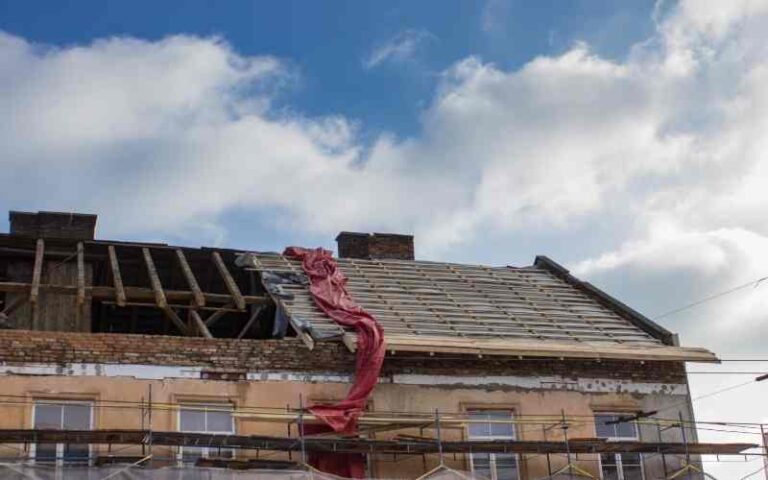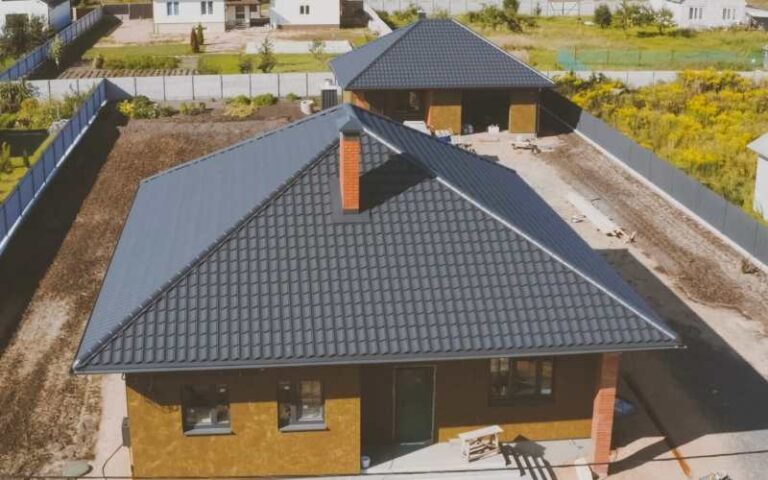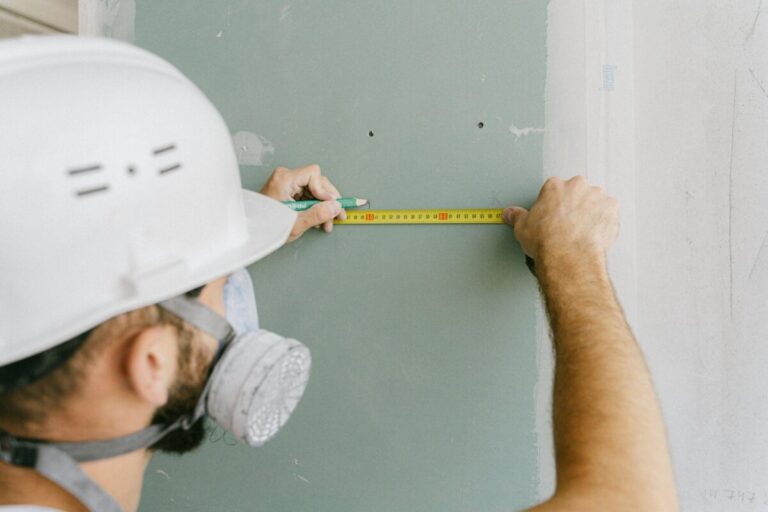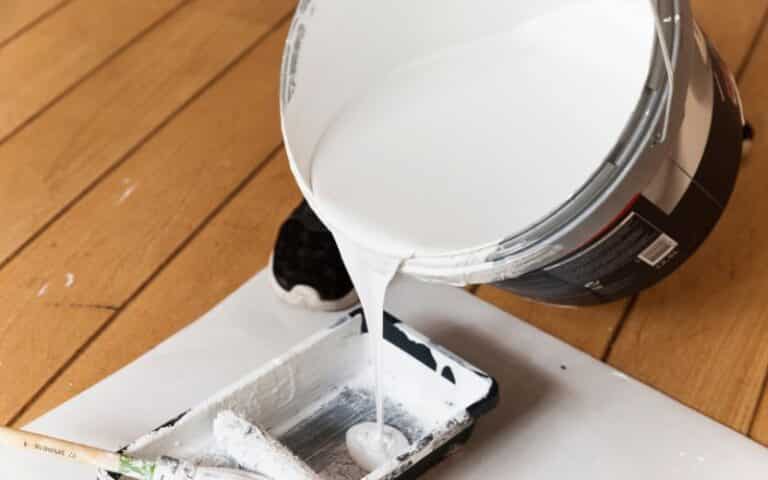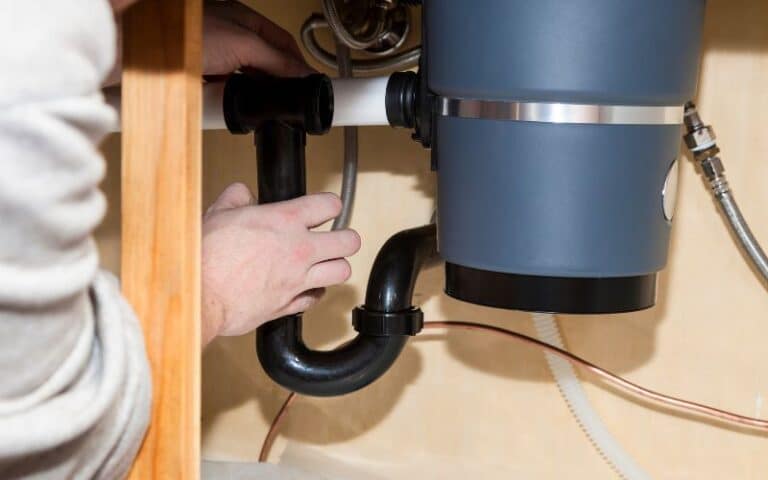Timber rafters are susceptible to rot and damage, especially if constantly exposed to moisture and adverse weather. Time is also another eminent factor for weather decay.
Roofs shield rafters, but water somehow finds its way into the rafters, thereby causing damage.
The problem, however, would be when the replaced logs also get damaged. But, not to worry, this would take years.
Replacing a rafter is as essential as it gets. However, if you choose to DIY the replacement, you must exert utmost caution to ensure that you do not rattle the roof in the process.
Replacing the entire roof is unnecessary if your rafters need to be replaced. You could solder more rafters to the damaged ones and save yourself the cost of re-roofing. Fastening new rafters to the old reinforces the broken pieces. Thereafter, you would need to conduct timber resin repairs to prevent the damage from spreading from the old rafters to the new.
Ready for a Roofing Quiz?
Can You Replace Rafters Without Removing Roofs?
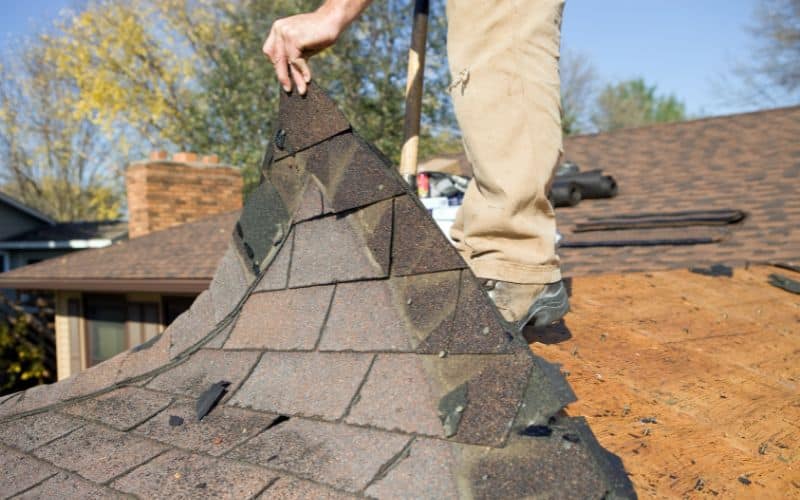
It would not be easy trying to evacuate rafters from a building without removing the roof. The rafters are located beneath the top, so the roof must be excavated to gain direct access to it.
So, what happens when rafters are damaged, and you cannot afford both rafter replacement and complete roof removal?
Sistering additional rafters are the best possible method. It saves you both stress and funds, whether you’re doing the replacement yourself or hiring a professional roofer.
Sistering rafters together can be done with nails, screws, or any other fastener.
The rafter is part of the roofing. Any alterations to it would affect the shingles, posters, trusses, and plywood attached to the existing metal roof.
Unless you’re working on a major reconstruction, total removal of the rafter or roofing is unnecessary. There’s always a compromise.
If you’re unsure about how to make these repairs or replacements, it would be best if you called in a professional roofer.
Roof construction can cause severe damage to your building; if not adequately managed. You should not take chances.
How to Replace Rafters Without Removing Roof (Step By Step Guide)
You own a house, and after a few years, you notice that your rafters are getting old and need to be removed.
You do not need to erect another building or plan to remove the existing metal roof to get to the rafter. You could either get a professional roofer to get the job done or simply do it yourself.
However, hiring a roofer is the best method to guarantee your safety and the safety of your structure. You are climbing up a ladder to fix the roof yourself and getting in harm’s way.
Needless to say, there are numerous reported cases of ladder accidents.
A skilled roofer is knowledgeable in both concepts and practical applications.
They have demonstrated their ability through genuine contracting services and are trained enough to efficiently repair timber resin.
No amount of reading, researching, or watching YouTube videos matches an expert’s knowledge and skills.
Nonetheless, here is a detailed guide on how to replace a rafter without replacing the entire roof:
#1. Measure And Cut New Rafters
You would need to measure the magnitudes of the old rafters which are under your roofing surface.
This is necessary to keep the roof intact while you carry out the replacement. Next, use your take to measure the extent of the two plank legs.
After the measurements, you use a circular saw to cut out the measured rafter. The pair must be of the same length and proportion as the existing rafters.
This is essential for uniformity. It would be great to get a skilled hand to handle the measurement, and cutting would be great.
However, it is a necessary aspect of the operation, and you cannot afford rookie mistakes.
#2. Slide And Install
After the measurement and cutting, you must get up the roof and slide the rafter legs, positioning them to face the old rafters. Again, you may need help with this.
A single person cannot hold the rafters in place whether or not you’re replacing the entire roof.
While the other person holds the rafter in place, you can proceed to install the old rafters into the new using nails and a hammer.
Hammer in the nails in strategic positions and ensure that the logs are stable before your partner let
Install another new rafter in the same manner on the other side of the old rafter so that it can be sandwiched between the two new pieces.
#3. Mark And Cut New Joists
Slip the recent shafts into position under each of the new sets of rafters. Then mark the slope of the rafter by use of pencils.
Finally, cut the joists’ ends with a circular saw and the pencil marks so the joist matches against the underside roof sheathing.
#4. Driving Nails And Transferring Loads
The next step would be to drive nails through the joists into the end of the new rafters.
After all this, the load from the old rafters will be transferred to the new one. This way, the existing metal roof remains intact. Can You Use Joist Hangers For Rafters?
Do Roofers Replace Rafters?
Roofers can suffice for rafters. However, most people opt for rafters, despite the latter being more expensive.
Roofers and rafters may appear to be very similar at first sight, but they are pretty distinct. Although they serve comparable functions, it all comes down to personal style.
Rafters are considered traditional alternatives, and roofers are a more contemporary option.
Roofers (commonly called trusses) and rafters are both types of roof framing.
Roofers appear slanted with beam designs to support everything associated with the roof, for instance, the underside roof sheathing.
On the other hand, rafters are structural wood used to support the top and bridge the area above a room.
Roofers are much more durable, have an extended lifespan, and are more affordable than rafters. However, rafters allow for more creativity and provide the opportunity for more space in a room.
Although it is technically possible to replace trusses with rafters, it’s best to consult a structural engineer before making any decisions.
Redesigning a roof space potentially alters the structural integrity, so it’s best to leave the job to the pros.
Consulting with the pro would give you an insight into the best roofing option for your structure.
Skilled roofers can often install an average U.S. home’s roof trusses in just one day. Rafters, on the other hand, can take up to seven days to install.
A roofer is a preferred budget-friendly option if you’re considering the expenses.
The typical price of a roof truss is between $50 and $450, while the cost to install trusses on a roof measuring 1,500 square feet is between $13,500 and $16,500.
This varies according to the truss’s size, type, and construction materials. Roof framing materials have a range of average costs.
For example, the average price per board foot for wood is $3 to $5, while for steel frames, it is $7 to $9. Some roofing types use wood with steel bracing, but wood trusses support most.
Different trusses go to other locations on the roof. And, if you can’t decipher their appropriate place, it would be best to leave the task to trained roof experts.
Conclusion
Rafters will always get damaged eventually. This is almost unavoidable, regardless of how much you treat the wood before installation.
If your rafters get old and need a replacement, they don’t need to take them out.
You could simply install new logs to reinforce the failing records and then proceed to perform timber resin repairs for the safety of the wood.

